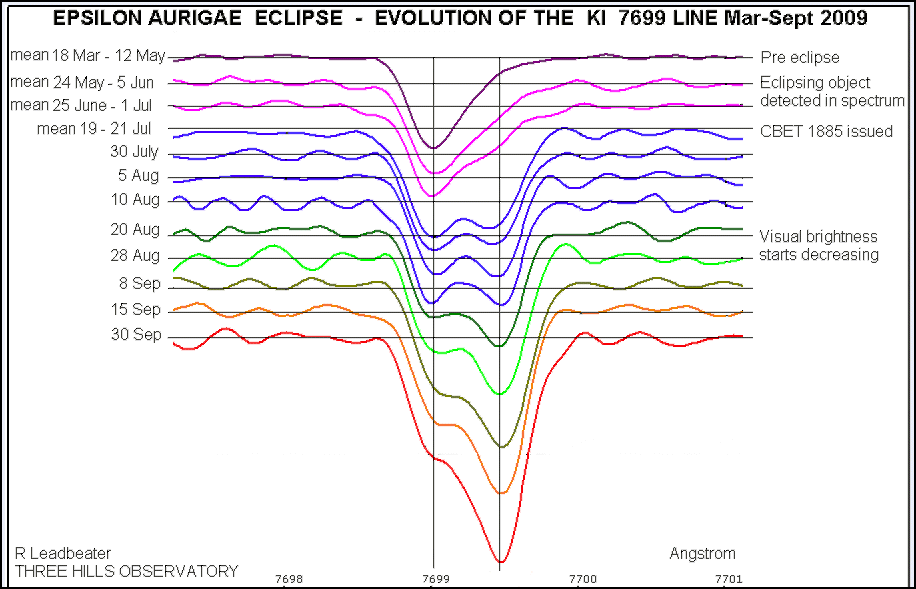Robin Leadbeater writes...
Spectroscopy
There have been dramatic improvements in the
instrumentation available to the amateur since the last Epsilon Aurigae
eclipse, including affordable CCD cameras and spectrographs capable of
achieving resolutions down to sub Angstrom levels. A simple low resolution
spectrum can easily produced and will show the characteristics of the
spectral type FIa primary. (See
here for example). Some changes may be detectable during eclipse at this
resolution, particularly in the H gamma region (around 4340A) and possibly
at the K I wavelength (7665,7699A). The main interest however is likely to
be at higher resolution where changes in line intensities and profiles due
to the eclipsing body can be detected and radial velocities measured. Eps
Aur is bright enough to allow high resolution spectra to be recorded using
modest apertures and suitably equiped amateur spectroscopists are encouraged
to participate in this campaign. References including spectra from previous
eclipses can be found on the international campaign website and some
examples of recent spectra can be seen
here
Robin Leadbeater, September 13th, 2009
High resolution spectroscopy pre first contact
As in previous eclipses, the presence of the eclipsing
body was detected spectroscopically some time before any drop in brightness
was evident . Changes in the KI 7699 line profile in particular were evident
from the end of May 2009 and were sufficiently distinct by 19th
July that CBET 1885 was issued announcing the detection of the eclipsing
body. The additional component in the line has continued to strengthen,
though the rate of increase in intensity has been variable with two pauses
to date, each lasting a few weeks. More details can be found in
this poster paper presented at the BAA meeting Leeds 5th September 2009


